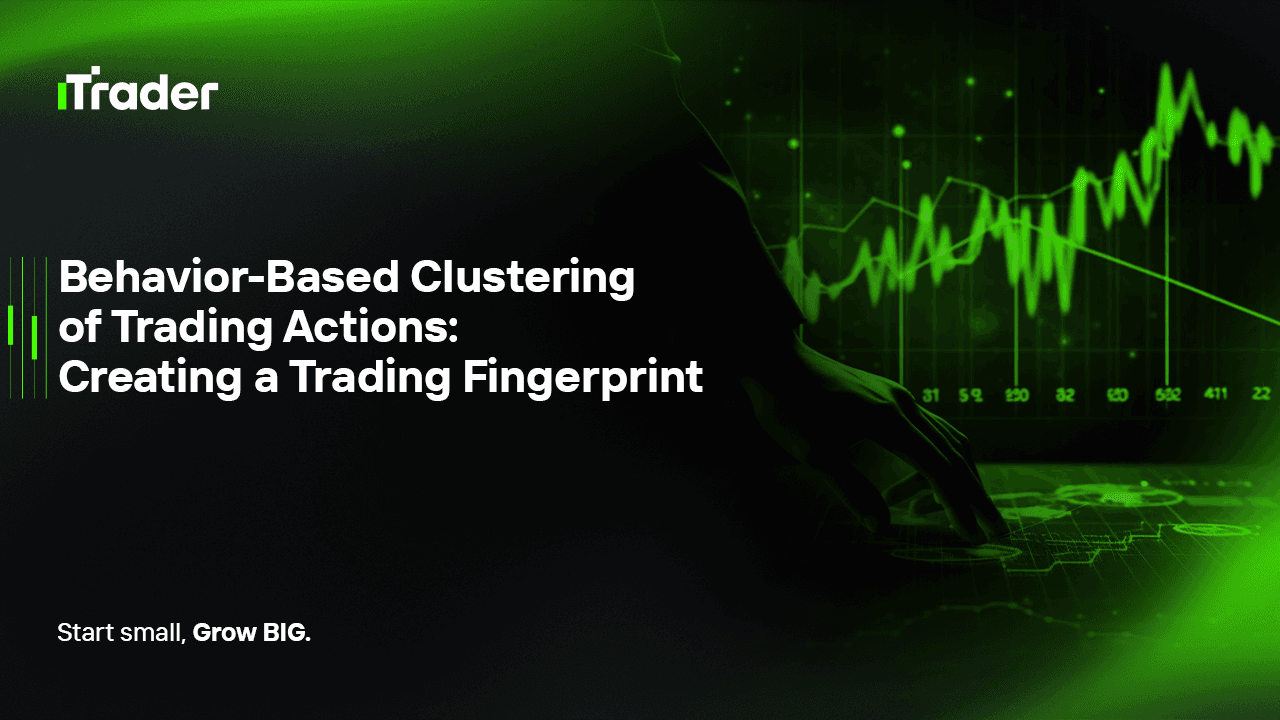2025-06-20
Most trading analytics focus on the results: profit and loss, win rates, or drawdowns. But what if we took a deeper approach—not analyzing what was gained or lost, but how each decision was made? What if we could map out the behavioral DNA of a trader by clustering patterns in their decisions over time?

Welcome to the emerging concept of behavior-based clustering in trading—a method for understanding the "how" and "why" behind trades to build what we call a trading fingerprint.
A trading fingerprint is a behavioral signature that captures how a trader tends to act under different conditions. It is:
This fingerprint can reveal:
Traditional metrics like Sharpe ratio or net profit offer outcome-based analysis. They do not explain how those results came to be.
Behavior-based clustering, on the other hand:
This method is especially powerful for:
To cluster behavior, you first need detailed, structured data. The dataset should include more than just entry and exit prices.
Collecting this data might involve:
Once the dataset is built, clustering techniques can be used to identify recurring behavioral archetypes.
This is where the trading fingerprint takes shape: a visualization and classification of your most common behavior types.
Knowing your behavioral clusters allows you to:
For instance, if Cluster B shows poor results during high volatility due to hesitation, you can build specific rules to avoid trading during such conditions.
Link your behavior clusters to live metrics. If a trade matches a "risky impulsive" profile, alert systems can:
Your behavior profile can be used to:
For firms, this method provides:
Imagine a trader logs 1,000 trades with behavior tags and metadata. A clustering analysis reveals:
This trader can now make an informed decision:
Behavior-based clustering is powerful but not perfect.
Thus, it’s not about finding a permanent “identity” but developing a real-time behavioral map to guide decision-making.
Too many traders measure only what the market gives them. But real mastery comes from understanding what you give to the market—your actions, reactions, and routines.
Behavior-based clustering offers a powerful mirror. It reveals the hidden patterns behind your trades, giving you the opportunity to:
Your P&L tells the score.
Your fingerprint tells the story.
2025 Ай Трейдер Глобал ХХК | Компанийн бүртгэлийн дугаар: 15962
Ай Трейдер Глобал ХХК нь Комор улсын Анжуан арал дахь Мутсамуду хотын Хамчакод байрлалтай. Тус компани нь Коморын Үнэт Цаасны Хорооноос (Securities Commission of the Comoros) олгосон L15962/ITGL дугаартай тусгай зөвшөөрлийн хүрээнд үйл ажиллагаа явуулдаг.
Ай Трейдер Глобал ХХК нь “iTrader” нэрийн дор үйл ажиллагаа явуулдаг бөгөөд (Форекс) арилжааны үйл ажиллагаа явуулах эрхтэй. Компанийн лого, барааны тэмдэг, вэбсайт нь зөвхөн Ай Трейдер Глобал ХХК компанийн өмч юм.
Ай Трейдер Глобал ХХК -ийн охин компани болох : iTrader Global Pty Ltd, Австралийн компанийн бүртгэлийн дугаар (ACN): 686 857 198. Энэ компани нь Opheleo Holdings Pty Ltd компанийн албан ёсны төлөөлөгч бөгөөд Австралийн санхүүгийн үйлчилгээний төлөөлөгчийн дугаар: 001315037 -тай. Австралийн санхүүгийн үйлчилгээний лицензийн дугаар: 000224485 -тай Level 1, 256 Rundle St, Adelaide, SA 5000 хаягт байршдаг. Анхааруулга: Энэ байгууллага нь энэхүү вэбсайт дээр болон дамжуулан арилжаалагдаж буй санхүүгийн (арилжааны) хэрэгсэл нийлүүлэгч биш бөгөөд ямар нэгэн хариуцлага хүлээхгүй болно.
Эрсдэлийн сэрэмжлүүлэг: CFD арилжааны хөшүүргийн улмаас хөрөнгөө хурдан алдах өндөр эрсдэлтэй тул бүх хэрэглэгчдэд тохиромжгүй байдаг.
Фанд, CFD болон бусад өндөр xөшүүрэгтэй арилжаа нь хэрэглэгчээс нарийн төвөгтэй ойлголтуудын талаар тусгай мэдлэг шаарддаг. Хөшүүрэгтэй арилжаанд оролцогчдын 84.01% нь алдагдал хүлээдгийг судалгаанууд харуулдаг тул хөшүүрэгтэй арилжаанд орохоос өмнө хөрөнгөө алдах маш өндөр эрсдэлтэй болохыг анхаарна уу.
iTrader нь аливаа иргэн, хуулийн этгээдийн өмнө xөшүүрэгтэй арилжааны эрсдэл, алдагдал, бусад хохирлыг бүхэлд нь хариуцахгүй болохыг мэдэгдэж байна.
Энэхүү веб сайтын мэдээ, мэдээлэл нь зөвхөн мэдлэг түгээх зорилготой тул хэрэглэгч та бие даан шийдвэр гаргана уу.
Хязгаарлалт: iTrader нь вэбсайт болон үйлчилгээгээ тухайн орны хууль тогтоомж, дүрэм журмаар хориглосон орнуудад оршин суугчдад чиглүүлдэггүй. Хэрэв та энэхүү вэбсайтыг ашиглахыг хориглосон оронд байгаа бол вэбсайт болон үйлчилгээг ашиглахдаа тухайн орны хууль тогтоомжид нийцэж байгаа эсэхийг шалгах үүрэгтэй. iTrader нь вэбсайтынхаа мэдээлэл бүх оронд тохиромжтой эсэхийг баталгаажуулдаггүй.
Ай Трейдер Глобал ХХК нь зарим улс орны иргэдэд үйлчилгээ үзүүлэхээс татгалздаг болно. Жишээлбэл: АНУ, Орос, Бразил, Канада, Израйл, Иран.